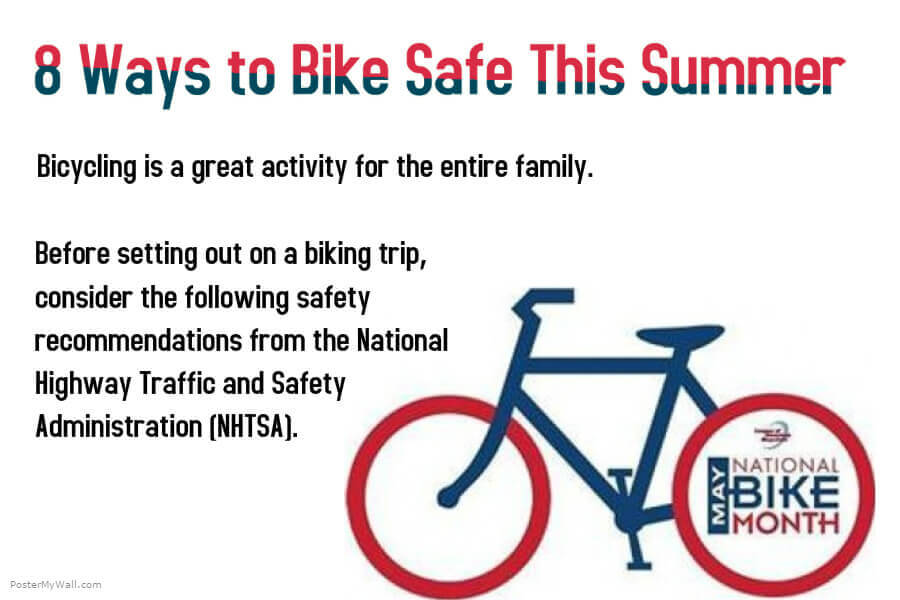Bicycling is a great activity for the entire family. Before setting out on a biking trip, consider the following safety recommendations from the National Highway Traffic and Safety Administration (NHTSA).
- Wear a Bicycle Helmet. Everyone, at every age, should wear bicycle helmets.
- Adjust Your Bicycle to Fit. Stand over your bicycle. There should be 1 to 2 inches between the rider and the top tube (bar) if using a road bike and 3 to 4 inches if using a mountain bike. The seat should be level front to back and the height should be adjusted to allow a slight bend at the knee when the leg is fully extended. The handlebar height should be level with the seat.
- Check Your Equipment. Before riding, inflate tires properly and check that the brakes work.
- See and Be Seen. Whether daytime, dawn, dusk, bad weather, or at night, make yourself visible to others. Wear neon, fluorescent or other bright colors when riding, to be most easily seen. Wear something that reflects light, such as reflective tape or markings, or flashing lights. Remember, just because you can see a driver doesn’t mean the driver can see you.
- Control the Bicycle. Ride with two hands on the handlebars, except when signaling a turn.
- Watch for and Avoid Road Hazards. Look for hazards such as potholes, broken glass, gravel, puddles, leaves and dogs. All these hazards can cause a crash.
- Use Verbal and Non-Verbal Communication. This includes eye contact with drivers, turn signals, pointing to road hazards for bicyclists behind you and communicating with others “passing on your left,” or “on your left.”
- Avoid Riding at Night. It’s hard for road users to see bicyclists at dusk, dawn, and nighttime. Use reflectors on the front and rear of your bicycle. White lights and red rear reflectors or lights are required by law in all States.
For information on bike safety visit the National Highway Traffic and Safety Administration http://www.nhtsa.gov/Bicycles


